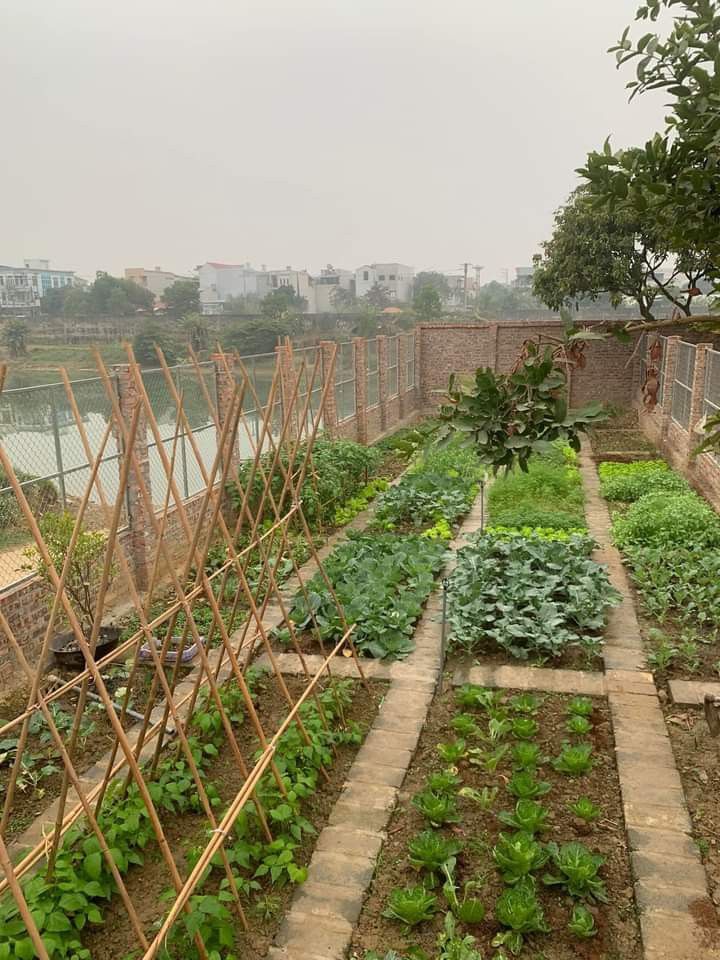Are you tired of your vegetable garden not producing as much as you hoped? Do you long for a bountiful harvest of organic goodness? Look no further! In this article, we will explore five proven techniques for maximizing yield in your organic vegetable gardens. Say goodbye to wasted space and lackluster crops, and say hello to a thriving, productive garden that will leave your neighbors green with envy. Whether you’re a seasoned gardener or just starting out, these techniques are sure to take your vegetable-growing game to the next level. So grab your gardening gloves and get ready to learn how to make the most of your plot – it’s time to maximize yield like never before!
The Importance of High-Yield Organic Vegetable Gardens
High-yield organic vegetable gardens are more than just an aesthetically pleasing addition to your backyard. They offer a multitude of benefits that go beyond the satisfaction of harvesting your own fresh produce. For starters, high-yield gardens enable you to maximize the use of limited space, allowing you to grow a greater variety and quantity of vegetables in a smaller area. This is particularly beneficial for urban gardeners or those with limited yard space.
Additionally, high-yield organic vegetable gardens play a vital role in promoting sustainability and reducing our carbon footprint. By growing our own food organically, we eliminate the need for harmful pesticides and synthetic fertilizers that have detrimental effects on both human health and the environment. Instead, these gardens rely on composting, crop rotation, and companion planting techniques to promote natural pest control while enriching the soil with essential nutrients.
Furthermore, high-yield organic vegetable gardens provide an opportunity for individuals and communities to reconnect with nature while improving their overall well-being. Gardening has been proven to reduce stress levels and improve mental health by providing an outlet for creativity and nurturing interaction with living organisms. It also encourages physical activity as caregivers tend to their plants, dig into the soil, and harvest their bountiful crops.
Incorporating high-yield organic vegetable gardens into our lives can empower us as individuals to take control of our food systems sustainably.
Soil Preparation
Soil preparation is a crucial step in building a nutrient-rich foundation for your organic vegetable garden. It sets the stage for optimal growth and abundant harvests. One effective technique is to incorporate compost into your soil. Compost adds vital nutrients, improves soil structure, enhances moisture retention, and promotes beneficial microbial activity. By utilizing kitchen scraps, yard waste, and other organic materials, you can create your own nutrient-dense compost and boost the health of your soil.
Another essential aspect of soil preparation is testing and balancing pH levels. Different plants thrive in different pH ranges, so it’s important to know the specific needs of the vegetables you plan to grow. Acidic soils can be amended with lime to raise pH levels, while alkaline soils may require elemental sulfur or peat moss to lower them. Balancing pH not only ensures that nutrients are readily available to plants but also helps prevent nutrient deficiencies or toxicities that can hinder growth.
Additionally, adding organic matter such as aged manure or leaf mold to your soil can greatly enhance its fertility by boosting nutrient availability and moisture retention. Organic matter acts as a sponge, absorbing water during rainy periods and releasing it slowly when conditions are dry – ensuring a steady supply of moisture for plant roots throughout their growing season.
It’s worth noting that regular crop rotation plays an integral role in maintaining healthy soil as well. This practice helps prevent the build-up of pests and diseases specific to certain crops while promoting biodiversity within your garden ecosystem.
Companion Planting
Companion planting allows us to tap into the incredible power of nature by harnessing the symbiotic relationships between plants. When certain plants are grown together, they can enhance each other’s growth and even repel pests naturally, reducing the need for chemical interventions. For example, planting marigolds alongside tomatoes can help deter pests like aphids and nematodes while attracting beneficial insects like ladybugs that prey on harmful bugs. This not only protects our crops but also contributes to a healthier ecosystem in our gardens.
Furthermore, companion planting can improve soil fertility and structure. Plants such as legumes have nitrogen-fixing capabilities, meaning they take nitrogen from the air and convert it into a form that can be absorbed by surrounding plants. By intercropping or alternating legumes with other vegetables, we can ensure an adequate supply of nutrients for our crops without relying solely on synthetic fertilizers. Additionally, certain companion plants like herbs release essential oils into the soil that promote better root development and repel pests naturally.
Incorporating companion planting techniques into your organic vegetable garden not only increases productivity but also promotes a balanced ecosystem where nature works in harmony to support plant growth. By understanding these natural relationships between different species of plants, we can reduce reliance on chemicals while reaping the benefits of higher yields and healthier produce from our own backyard gardens. It’s time to let nature do its magic – try out some companion planting strategies today!
Intensive Planting

Intensive planting is a technique that has gained popularity among organic vegetable gardeners for its ability to maximize space and productivity. By closely spacing plants together in a systematic manner, gardeners can make efficient use of every inch of available space. This method allows for more plants to be grown in the same area, resulting in higher yields.
One key aspect of intensive planting is choosing the right varieties of vegetables that are suitable for close spacing. Some plants naturally grow compactly, while others may require pruning or regular maintenance to encourage dense growth. Additionally, selecting companion plants that complement each other’s growth habits and nutritional needs can further optimize productivity.
Another advantage of intensive planting is reduced weed growth. When plants are spaced tightly together, they create a dense canopy that shades out weeds and limits their access to sunlight. This reduces competition between weeds and vegetable crops, allowing the latter to thrive without excessive manual weeding.
Furthermore, intensive planting promotes healthy plant development by encouraging air circulation and reducing disease transmission. Dense planting can create microclimates within the garden bed, providing shade during hot summer days or shelter from strong winds.
Intensive planting requires careful planning and attention to detail but offers numerous benefits for those looking to maximize their vegetable garden’s yield. Whether you have limited space or simply want to get the most out of your gardening efforts, incorporating this technique could be a game-changer for your organic vegetable garden journey.
Proper Watering Techniques
Proper watering techniques are essential for keeping plants happy and healthy in your organic vegetable garden. While it may seem straightforward, there are a few key factors to consider when it comes to watering your plants effectively. Firstly, timing is crucial. Water your plants early in the morning or late in the evening when the sun is less intense, as this allows the soil to absorb moisture more effectively without excessive evaporation. Secondly, it’s important to water deeply rather than shallowly. This means applying enough water so that it reaches the root zone of the plant, encouraging deep root growth and making your plants more resilient during dry spells.
Additionally, understanding your individual plant’s specific water needs is vital for successful gardening. Different vegetables require different amounts of water, so take into account factors such as weather conditions and plant maturity when determining how much water they need. Overwatering can lead to rot and disease while underwatering can stress plants and hinder their growth.
Incorporating irrigation systems like drip irrigation or soaker hoses can also be beneficial in maximizing efficiency and minimizing wastage. These methods help deliver water directly to the roots of the plants while reducing evaporation loss compared to overhead watering methods like sprinklers.
By paying attention to timing, depth, and individual plant requirements, and utilizing efficient irrigation systems, you can ensure proper watering techniques that will keep your organic vegetable garden flourishing with vibrantly healthy plants ready for bountiful harvests.
Organic Pest Control
One of the biggest challenges organic gardeners face is dealing with pest infestations. However, there are effective ways to protect your harvest naturally without resorting to harmful chemicals. One such method is companion planting, where certain plants are grown together to create a natural defense system. For example, marigolds can repel aphids and nematodes when planted near tomatoes or cabbage plants. Another natural solution is using homemade sprays made from ingredients like garlic, neem oil, or hot pepper flakes. These sprays can deter pests like insects and rodents while also being safe for human consumption.
In addition to companion planting and homemade sprays, biological controls offer another line of defense against pests. The use of beneficial insects like ladybugs and lacewings can help control populations of harmful pests like aphids and mites. By introducing these insects into your garden, you allow them to do the work for you by preying on the destructive pests that threaten your harvest.
To further protect your crops from pests, it’s important to practice good sanitation techniques in the garden. Removing any fallen fruit or vegetables promptly will discourage pests from feeding and breeding on them. Regularly inspecting plants for signs of pest damage allows you to catch infestations early before they become widespread problems.
By implementing organic pest control methods like companion planting, homemade sprays, biological controls, and good sanitation practices, you can protect your harvest naturally while maintaining an environmentally friendly approach in your garden.
Conclusion
In conclusion, achieving abundant yields in your garden is not only possible but also highly rewarding. By implementing the five proven techniques for productive organic vegetable gardens discussed in this article, you can greatly increase your chances of enjoying a bountiful harvest. From proper soil preparation to strategic plant spacing and companion planting, each technique plays a valuable role in optimizing the growth and productivity of your vegetables.
It’s important to remember that gardening is an ongoing learning process. Don’t be discouraged if you don’t see immediate results or encounter setbacks along the way. Embrace every opportunity as a chance to fine-tune your skills and deepen your understanding of the natural processes that govern plant growth.
By adopting a holistic approach to gardening, focusing on both the health of your plants and the well-being of the ecosystem they inhabit, you will not only enjoy higher yields but also contribute towards creating a more sustainable future. As our understanding of organic gardening techniques continues to evolve, there are always new insights and perspectives to discover. So keep experimenting, keep exploring, and never stop growing as a gardener!








1 thought on “5 Proven Techniques for Productive Organic Vegetable Gardens”